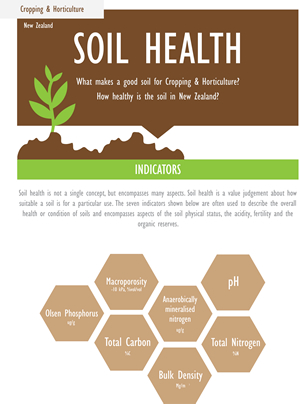Soil Quality - Data Federation
Soil quality data have been collected in the past but with inconsistencies in monitoring methods and discontinued programmes of soil data collection (e.g. the 500 soils programme ran from 1999 to 2001). These inconsistencies are common issues across the globe, and contribute to less than optimal State of the Environment (SoE) reporting in New Zealand. The IDA team contributed to international efforts to save soil legacy data via the Global Soil Map and the World Soil Information Service (WoSIS) project (Arrouays et al. 2017) and involvement in the FAO Global Soil Partnership Programme.
 The IDA programme contributed to standardising and collecting heterogeneous sources of soil quality information by creating a pipeline to ingest, harmonise, and validate several key soil data sources, including the 500 Soils Database of national soil quality monitoring and the Land Use and Carbon Analysis System (LUCAS) soil data, into Manaaki Whenua's National Soil Data Repository. Both these databases are used to support NZ’s international climate change reporting to the UN Framework Convention on Climate Change. As a consequence of the challenges uncovered in trying to harmonise soil data, IDA staff were asked to define a site naming scheme and associated site identification system for environmental monitoring (Ritchie & Osorio-Jamarillo 2017).
The IDA programme contributed to standardising and collecting heterogeneous sources of soil quality information by creating a pipeline to ingest, harmonise, and validate several key soil data sources, including the 500 Soils Database of national soil quality monitoring and the Land Use and Carbon Analysis System (LUCAS) soil data, into Manaaki Whenua's National Soil Data Repository. Both these databases are used to support NZ’s international climate change reporting to the UN Framework Convention on Climate Change. As a consequence of the challenges uncovered in trying to harmonise soil data, IDA staff were asked to define a site naming scheme and associated site identification system for environmental monitoring (Ritchie & Osorio-Jamarillo 2017).
IDA staff contributed to a review of soil quality and a trace elements stocktake to improve national consistency of SoE reporting (including soil quality and trace element monitoring, and data management). (Cavanagh et al. 2017).
As part of the Land Domain 2018 report, a comprehensive summary of soil quality data has been collected and submitted, using a peer-reviewed reproducible workflow to ensure data quality assurance.
Since we know that a complete soil-quality monitoring programme is lacking in New Zealand, we assessed coverage and representativeness of current soil quality monitoring sites as an indication of the necessary direction of future soil sampling strategies in NZ (Cavanagh et al. 2017).
